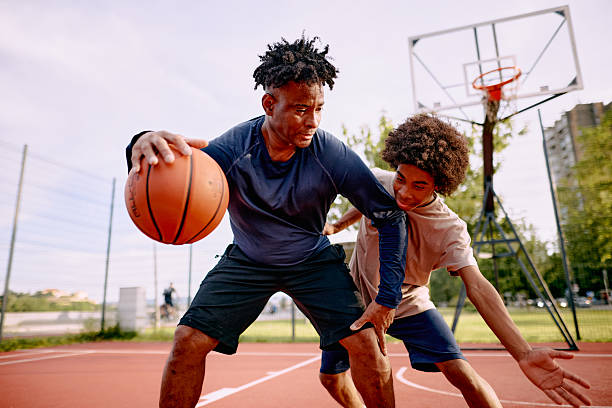Harmonicode Sports combines biomechanics, technology, and frequency-based training methods to improve performance, recovery, and injury prevention. Here’s a full guide.
Introduction
Harmonicode Sports isn’t a single product. It’s not a brand with one gadget. It’s a term used for a set of practices that merge movement science, frequency response, and technology into training and recovery. Different writers explain it differently. Some describe it as using biomechanical sensors and AI to improve athletic form. Others describe it as using vibrational frequencies to keep the body aligned and reduce fatigue. A few even frame it as a new kind of gamified fitness where physical movement links with rhythm and coding tasks. That’s why there’s confusion around it. But when you filter through the explanations, the core idea stays the same: apply scientific systems of harmony—either through movement mechanics or resonance—to get better outcomes in sports and physical performance.
The Concept in Simple Terms

At its base, Harmonicode Sports takes principles of physics—oscillation, resonance, frequency—and applies them to the human body. If you think of muscles and joints like parts of a system that need to work in sync, the method tries to measure, correct, or guide that sync. Some programs do this with sensors that track motion and feed data back through AI. Others use frequency devices like pads or wristbands that claim to balance the body’s energy state.
Both versions try to solve the same issues athletes face:
- Moving efficiently without wasting energy.
- Reducing stress on joints and muscles.
- Recovering faster after training.
- Keeping focus sharp under fatigue.
The Biomechanical Angle
One branch of Harmonicode Sports looks almost like advanced sports science labs but portable. Wearable sensors, AR overlays, and AI-driven feedback are used to check if someone’s stride, posture, or movement is off. That feedback can then guide corrections in real time. For example, a runner wearing sensors might see that their knee is angling inward by a few degrees during each step. Instead of finding that out later from a coach or injury, the Harmonicode system flags it immediately.
Applications here:
- Team sports use it for training drills, making sure form is consistent.
- Individual sports like swimming or running use it to refine movements.
- Rehab centers apply it to check if patients recovering from injuries are moving safely.
This approach treats Harmonicode Sports as a data-driven biomechanical training tool.
The Frequency-Based Angle
The other branch is less about motion sensors and more about resonance. Articles in VentsMagazine and similar sources describe it as tuning the body with harmonic frequencies. Devices like vibration mats, frequency wristbands, and bio-frequency pads are part of the setup. These tools give off low-level vibrations or signals designed to match natural frequencies in the body.
The stated benefits:
- Faster muscle recovery.
- Reduced fatigue after training.
- Mental clarity and calm before competition.
It’s often used in warm-ups or recovery sessions rather than during peak performance. Supporters say it works by aligning energy in tissues and reducing internal strain. Critics argue the science behind frequency therapy is not always well-verified. Still, athletes and trainers experiment with it because recovery and fatigue management are constant problems.
The Gamified Angle
A newer interpretation of Harmonicode Sports is less serious but still connected. Some developers frame it as a mix of fitness, rhythm games, and coding challenges. Users interact with AR or VR environments where they have to move physically in time with rhythmic sequences while solving coded puzzles. It’s fitness plus cognitive training rolled together.
This version is not for pro athletes. It’s more of a consumer fitness activity, appealing to people who want workouts that don’t feel like plain exercise. While it’s not the same as the biomechanical or frequency approaches, the shared theme is harmony between movement, rhythm, and feedback.
Why People Care About Harmonicode Sports
Across all interpretations, there are practical reasons why Harmonicode Sports has attention right now:
- Injury prevention – Sensors catch mistakes in posture before they lead to damage.
- Performance efficiency – By syncing biomechanics or energy flow, athletes conserve strength.
- Recovery speed – Frequency therapy and guided recovery routines shorten downtime.
- Mental focus – Neurofeedback or rhythm training keeps athletes steady under pressure.
- Accessibility – Wearables and AR make tech-driven training cheaper than full lab setups.
How It’s Done in Practice
Depending on which model of Harmonicode Sports you’re talking about, the practice looks different.
- Biomechanical training: Athlete wears sensors on joints. AI system tracks movements, highlights errors, and gives corrections. Coaches integrate the data into practice routines.
- Frequency sessions: Athlete uses wristbands or mats that emit low-level vibrations before or after workouts. Sometimes paired with breathing exercises.
- Gamified workouts: Player uses VR goggles or AR apps, following coded rhythmic patterns while moving. It’s half-game, half-exercise.
Common Mistakes
Like any training system, there are pitfalls.
- Over-reliance on devices: Some athletes trust the sensors but forget that data needs human coaching interpretation. Numbers without context can mislead.
- Skipping fundamentals: Harmonicode Sports doesn’t replace basic training. Strength, mobility, and conditioning are still core.
- Frequency tools without guidance: Using frequency pads or wristbands without knowing correct duration or settings might waste time.
- Treating gamified versions as full training: Rhythm-based AR workouts are fun, but they’re not substitutes for serious conditioning.
Risks if Done Incorrectly
If applied wrong, Harmonicode Sports can create problems:
- Misreading motion data could lead to harmful corrections.
- Using frequency devices improperly might cause over-stimulation or simply no effect.
- Athletes relying too much on gamified workouts might lose actual conditioning progress.
The system is supportive, not a magic replacement for structured training.
Comparison with Traditional Training
Traditional training relies on coach observation, physical drills, and standard recovery methods. Harmonicode Sports tries to supplement that with tech-driven feedback or resonance-based recovery. Where coaches might take weeks to notice form drift, sensors pick it up instantly. Where ice baths or massages handle recovery, frequency therapy aims for quicker turnaround.
This doesn’t mean one replaces the other. The most effective setups often combine both. Coaches still matter. Conditioning still matters. Harmonicode Sports just adds an extra layer of measurement and guidance.
Real-World Use Cases
- Professional athletes: Some track runners use it for gait correction.
- Rehab centers: Patients recovering from ACL surgeries use motion feedback systems.
- Casual users: Fitness enthusiasts try vibration mats to relax muscles post-workout.
- Tech-driven gyms: Some new gyms integrate AR-guided drills.
FAQs
What is Harmonicode Sports?
It’s a term covering different systems that combine harmony principles with sports training—through biomechanics, frequency-based recovery, or gamified workouts.
Is it scientifically proven?
Biomechanical systems using sensors and AI are widely supported in sports science. Frequency-based recovery is more debated, with mixed research results. Gamified fitness is more about engagement than proven performance gains.
Do you need expensive equipment?
Not always. Some setups use wearable sensors that are affordable. Frequency mats and wristbands vary in price. AR/VR versions depend on having headsets or apps.
Who uses it?
Athletes, rehab patients, and fitness hobbyists. The professional side leans more toward biomechanics, while casual users try frequency and gamified versions.
Can Harmonicode Sports replace a coach?
No. It adds data and tools, but coaches still provide interpretation and training structure.
Conclusion
Harmonicode Sports isn’t one single thing, and that’s where confusion comes in. In some places, it means biomechanics and wearable feedback. In others, it means frequency therapy. And now, it also refers to gamified rhythm workouts. What ties it all together is the idea of harmony—bringing movement, frequency, or rhythm into balance to improve outcomes. Used correctly, it’s a tool. Used wrongly, it’s a distraction. As more athletes, gyms, and tech companies test it, we’ll see which versions actually last.
Author Bio
Jordon is a sports technology writer focused on biomechanics, training systems, and the intersection of fitness and tech. He researches emerging practices like Harmonicode Sports and reports on how athletes and everyday users apply them.

